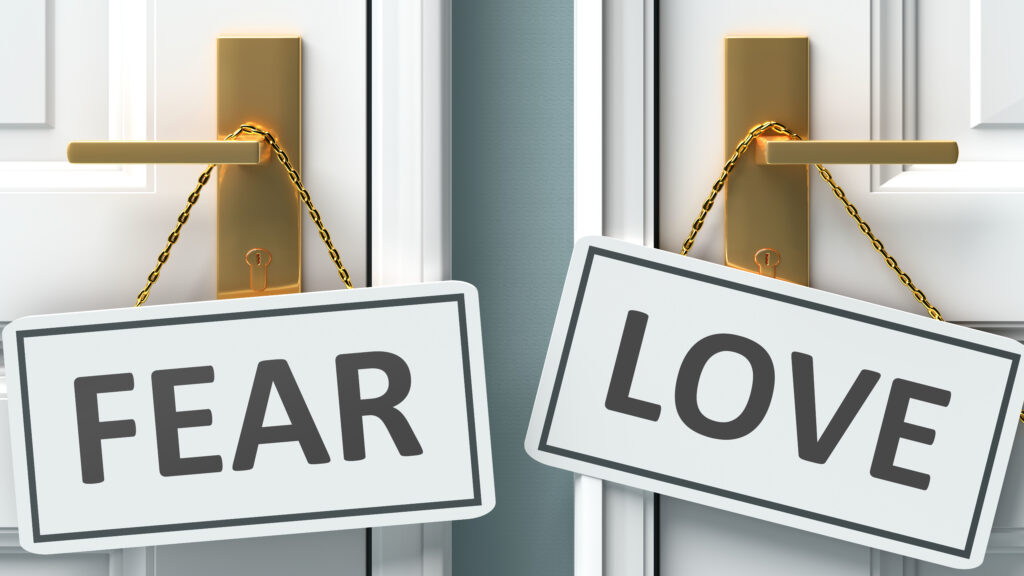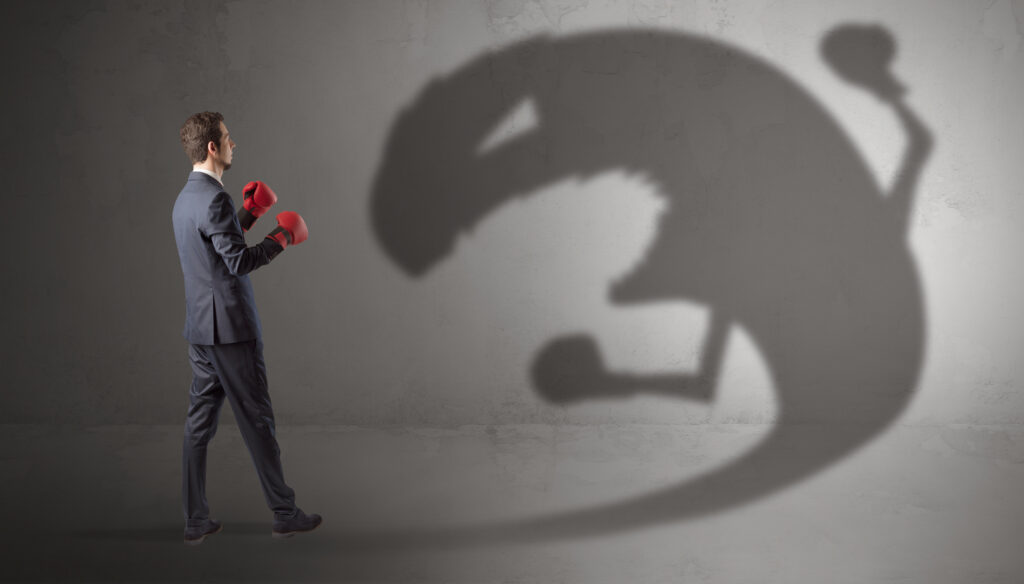“The only thing we have to fear, is fear itself,”
President Franklin Roosevelt once proclaimed, to stem the tide of panic during the Great Depression of the ’30’s. Then, as now, not really true.
I’m a great fan of well-placed fear. If I’m having a picnic in a game park, and hear the snuffling of a hungry tiger not too far away, I’m grateful for the immediate response of my amygdala, identifying the threat, the rapid breath now oxygenating my blood, the faster-beating heart chasing that blood to my legs…ready to run. Running! And maybe it wasn’t a tiger, maybe it was the guide with the bad cold returning from peeing behind the bushes…in which case, I blush, abashed, laugh at myself, and sit back down to eat my fried chicken (although that’s a bit more difficult now that my digestive system is still off-line, another effect of the shift to fight-flight).
Right now, the tiger is real. People are losing jobs, and either succumbing to the illness or finding out about friends, family, neighbors who have Covid-19. I’m not going to go into numbers here, I think most of you, dear readers, are by now familiar with them. So fear. Yeah.
There’s a big difference, though, between what fear is designed to do, short-term, and the chronic fear that most of us are experiencing, like a low-grade fever. Because this tiger keeps coming, and will for a while yet. So managing that fear is very much a part of our holistic survival during this pandemic.
There are two ways in which people mismanage fear, and both of them are going, oddly enough, to increase our risk of suffering. I ask you, dear reader, are you the ostrich, or the badger? Because from time to time, I’m both.
The ostrich likes to hide from fear,
shying from its overwhelming pull. Recently, a friend of mine just turned down an invitation to an Easter party. The host and hostess are inviting about 20 of their nearest and dearest to join together to celebrate chocolate eggs and, no doubt, edibles of another sort. Yes, they’re young, though not that young. One of them even has a chronic medical condition. I understand, though. The desire to take an emotional break from the nagging anxiety and revel in the things I love to do, which often have me wending my way through a Friday Night art walk crowd, or gathering with friends to dance with abandon, feed me on a deep level. They remind me that, along with the threats that are a part of living in this world, there is much beauty and joy; I sense an effervescence in my body, my heart expands, and my own curiosity and sense of wonder are engaged. Our ability to deny our fear, to bask in the anesthetic bliss of “no big deal” is completely understandable: we shy from overwhelm. We disconnect, dissociate, from the roiling gut, the perpetual agitation, the helplessness in the face of doomsday predictions. It’s all just too much. Denial can be comforting in times like this. So the jogger who breezed by within a foot of an elderly woman at the park, spraying respiratory droplets, was probably saying to himself, “it was just for a few moments, and I feel fine so I’m probably not a carrier anyway.” Maybe he’s from Georgia? That’s minimization. The Easter Egg party is outright denial. And yes, you might dodge the bullet this time, but again, we’ve got a long way to go.
Having worked with addiction and serious mental illness, I’ve been the fortunate witness to those who, at long last, could no longer deny their own suffering, and that of others who loved them. If you’re an ostrich, leaning into the discomfort may allow you to recognize the risk you’re taking, and make a decision or two that might save your life, and your well-being. Just think of all the people who’ll be dancing with joy right along with you…who wouldn’t have been there but for more cautious neighbors
Then there’s the badger.
The badger startles at any unusual sound or movement, springing back on strong legs in preparation to attack or run. When most of us step out into the world, either physically or virtually, what we notice determines how vigilant we are. The deniers only, as we’ve established, see fun and joy, rainbow-colored farts that smell like Channel No. 5. Those that, as a trauma therapist, I would describe as relatively healthy, see possible threat as well, both the beauty of the landscape and the dark clouds in the distance. In this pandemic, both the conscious kind acts of neighbors who smile from at least 6 feet away or the bravery of front-line health and safety workers, and the stark numbers that continue to increase and the failure of some leaders to guide well.
For the hypervigilent badger, terror reigns. Compulsively, they check the numbers, absorb the conspiracy theories, avoid humanity completely, as they spray bleach on surfaces that at some point are well past the slimmest possibility of contamination. Isolating well past the point of safe social distancing, consumed by doomsday “data” from spurious sources, they spin endlessly in a world that has become (or in the case of some of my trauma clients, has returned to being) threatening in all directions. You just don’t know yet where the threat is coming from, or when. But it will. These people brace constantly, always ready to run, to fight. The heart never finds a restful rate, the body rarely softens, grounds, and finds ease and comfort. One must always be ready. Hyper. Vigilant.
While we want to watch the potential for infection, we must also consider that our immunity is also an important factor. And this constant stress is going to kick that immunity in the butt, big-time.
Giving yourself a break from the Covid reports, if you’re hypervigilent, to do one of the many activities crowding social media, would be a good start. Tapping into your compassion enough to listen to a podcast or reliable news source on the pandemic might be a softer way of leaning into the threat. If you’ve got a back yard, crank up the tunes and dance. Find an early morning or late evening trail or city park to walk in, when the numbers are lower, wear a mask, and go. Connect with neighbors through NextDoor, and find ways of helping.
How, instead, can we manage our fear,
so that we don’t ignore it nor be consumed by it? There are a host of guided meditations available for free that specifically address this. Google is your friend. Also TEDTalks. How about some meditation apps? Or yoga? My clients have taught me a great deal about chronic fear, for reasons that far outstrip the present distancing we’re being asked to do now: parents who beat them or ignored their existence from infancy on, severe and unending poverty, war-torn countries. And these were children, who truly had no power over cruel conditions that went on for years. That’s fear. I ask them, as I ask you now:
- How much are you, now, in the present moment?
- How much are you in all of your body, instead of just your spinning head?
- Can you get grounded? (click on this link for some exercises you can do)
- If yes, enough, to the above, can you identify a place in your body that feels…ok? Comfortable, at ease, solid, connected?
- If yes, again, can you lean just a little into how your body feels the fear? Not all the way, just a tap for starters. Then come back to where you feel ok.
- Settle
- Repeat
If this is too much for you to do on your own, this is not a failure. This is an opportunity. Because social distancing does not equal being alone. There is an antidote to fear. Love. Find what you truly love. Look on the faces of those whom you love, and give into the tender warmth that kindles in your heart, and let its glow spread. Together, we’ll get through this. And of course, I’m here to help.

